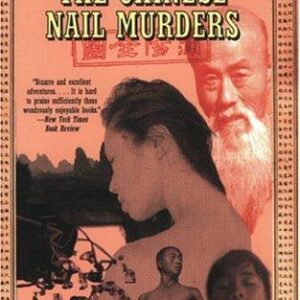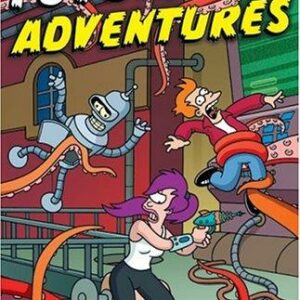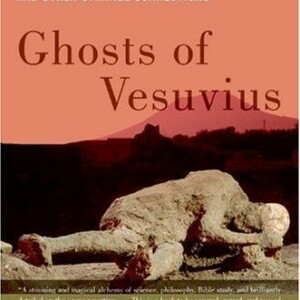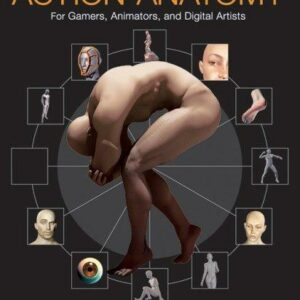The Yard
$17.00
| Title | Range | Discount |
|---|---|---|
| Trade Discount | 5 + | 25% |
- Description
- Additional information
Description
As Jack the Ripper’s reign of terror in London comes to an end, a new era of depravity sets the stage for the first gripping mystery featuring the detectives of Scotland Yard’s Murder Squad.
“If Charles Dickens isn’t somewhere clapping his hands for this one, Wilkie Collins surely is.”—The New York Times Book Review
Victorian London—a violent cesspool of squalid sin. The twelve detectives of Scotland Yard’s Murder Squad are expected to solve the thousands of crimes committed in the city each month. Formed after the Metropolitan Police’s spectacular failure in capturing Jack the Ripper, they suffer the brunt of public contempt. But no one can anticipate the brutal murder of one of their own…
A Scotland Yard Inspector has been found stuffed in a black steamer trunk at Euston Square Station, his eyes and mouth sewn shut. When Walter Day, the squad’s new hire, is assigned to the case, he finds a strange ally in Dr. Bernard Kingsley, the Yard’s first forensic pathologist. Their grim conclusion: this was not just a random, bizarre murder but in all probability, the first of twelve.
The squad itself it being targeted and the devious killer shows no signs of stopping. But Inspector Day has one more surprise, something even more shocking than the crimes: the murderer’s motive.Praise for The Yard
“Grecian has a talent for capturing gory details…extremely vivid (and strangely moving)…Bounding from the workhouse to the lunatic asylum to the stinking streets, [Grecian] does outstanding descriptive work on the mad and the maimed, the diseased and the demented. If Charles Dickens isn’t somewhere clapping his hands for this one, Wilkie Collins surely is.”—The New York Times Book Review
“An absorbing launch pad for a new series built around the detectives who are finding their way in the new business of criminology. Fingerprinting, saving evidence, comparing notes from different crimes to see if there’s a pattern, even something as simple as working in pairs are all novel, untested ideas tried out for the first time…[a] mix of historical facts and vivid fictional creations. It’s great fun…Grecian’s debut is the promising start of a new series and should be one of the most acclaimed and popular mysteries of the year.”—The Huffington Post
“Alex Grecian’s exuberantly grisly serial killer tale set in 1889 London picks up where the Ripper left off.”—The Guardian (UK)
“Lusciously rich with detail, atmosphere, and history, and yet as fast paced as a locomotive, The Yard will keep you riveted from page one. It’s truly a one—or two—sitting read.”—Jeffery Deaver, author of Carte Blanche and The Bone Collector
“A brilliantly crafted debut novel with unforgettable characters. An utterly gripping tale perfectly evokes Victorian London and brings you right back to the depraved and traumatic days of Jack the Ripper.”—Lisa Lutz, author of The Spellman Files
“Grecian successfully re-creates the dark atmosphere of late Victorian London.”—Kirkus Reviews
“A winner, filled with Victorian arcane and eccentric characters and more humor than one expects from such a work.”—The Rap Sheet
“Grecian powerfully evokes both the physical, smog-ridden atmosphere of London in 1889 and its emotional analogs of anxiety and depression. His infusion of actual history adds to this thriller’s credibility and punch. A deeply satisfying reconstruction of post-Ripper London.”—Booklist
“This excellent murder mystery debut introduces a fascinating cast of characters. Grecian displays a flair for language as well as creating vivid (and occasionally gruesome) depictions of places and events.”—Library Journal
“All the gruesome sights, sounds, and smells of a depraved Victorian London are vividly depicted…not for the squeamish. The characterization is particularly adept, and there’s even the occasional thought-provoking comment on industrialization and metropolitan Victorian society…Add to it all a few genuinely funny moments courtesy of absurdity and human nature, and you have The Yard: a gripping police procedural mystery and cracking good read. Recommended.”—Historical Novel Society
“I enjoyed every minute of The Yard. If you like gritty crime stories with a psychological thriller edge then you’re in for a treat.”—Popcorn Reads Alex Grecian is the national bestselling author of the contemporary thriller The Saint of Wolves and Butchers, the novels of Scotland Yard’s Murder Squad, including The Yard, The Black Country, The Devil’s Workshop, The Harvest Man, and Lost and Gone Forever, as well as the critically acclaimed graphic novels Proof and Rasputin. Grecian lives in Kansas with his wife and son.Prologue
LONDON, 1889.
Nobody noticed when Inspector Christian Little of Scotland Yard disappeared, and nobody was looking for him when he was found. A black steamer trunk appeared at Euston Square Station some
time during the night and remained unnoticed until early afternoon of the following day. The porter discovered it after the one o’clock train had departed, and he opened the trunk when it proved too heavy for him to lift.
He immediately sent a boy to find the police.
Detective Inspector Walter Day was first at the scene, and he directed the many bobbies who arrived after him. He had come to London only the week before. This was his first crime scene and he was clearly nervous, but the blue-uniformed bobbies knew their job well and did not require much from him. They pushed back the commuters who had gathered round the trunk and began to scour the station for possible weapons and other clues.
An hour later, Dr Bernard Kingsley entered the station all in a rush and headed for the knot of people gathered on the gallery of the booking office. The trunk had been left against the railing overlooking the platform. Kingsley brushed past Inspector Day and knelt on the floor.
He opened his satchel and drew out a cloth tape measure, snaked it between his fingers, moving it up and across. The trunk was a standard size, two by three by three, glossy black with tin rivets along the seams. He closed the lid and brushed a finger across the top. It was clean; no dust.
With his magnifying glass in hand, he scuttled around the trunk, scru
tinizing the corners for wear. He licked his finger and rubbed a seam along one side where black paint had been applied to cover a crack. He was aware of Day hovering over his shoulder and, less intrusive, the bobbies at the sta
tion’s entrance pushing back fresh onlookers who had arrived from the street outside. The lower classes were always out for a spectacle, while the better-off walked briskly past, ignoring the to-do.
His preliminary examination out of the way, Kingsley opened and shut the trunk’s lid several times, listening to the hinges, then eased it back until the edge of the lid rested against the floor. He peered into the trunk for a long moment, ignoring the sickly sweet odor of death. The body inside was folded in on itself, knotted and mashed into the too-small space like so much laundry. One shoe was missing, and Kingsley presumed it was some
where at the bottom of the trunk, under the body. The man’s suit was gabardine, the hems lightly worn, dirt pressed into the creases. His arms and legs were broken and wrapped around one another.
Kingsley took a pair of tongs from his satchel and used them to move an arm out of the way so he could see the man’s face. The skin was pearl grey and the eyes and mouth were sewn shut with heavy thread, the pattern of parallel stitches like train tracks across the man’s lips. Kingsley looked up at Day. When he spoke, his voice was low and measured.
“Have you identified him yet?”
Day shook his head no.
“It’s one of you,” Kingsley said.
“One of me?”
“The body is that of a detective. This is Inspector Little.”
Day backed away to the railing and held up his hands, warding off the unpleasant thought.
“It can’t be. I spoke with Little just last evening.”
Kingsley shrugged.
“It’s not that I doubt you,” Day said. “But Inspector Little . . .”
“Come and see for yourself,” Kingsley said.
Day stared at him.
“I said come here. Please.”
“Of course.”
Day approached the trunk and swallowed hard before looking down.
“Breathe through your mouth, Mr Day. The odor isn’t pleasant.”
Day nodded, panting heavily.
“I suppose it is Mr Little. But what have they done to him?”
“You can see what’s been done. The question is why has it been done?”
“It’s inhuman.”
“I’m afraid it’s all too human.”
“Cut those off him. Get that off his face. We can’t have a detective of the Yard trussed up like a . . . like a Christmas goose, for God’s sake.”
One of the uniformed constables standing at the rail looked up. The station was full of citizens who didn’t care about the dead detective in the trunk just so long as they got a chance to see him. Day recognized the ter
ror in the constable’s eyes and could see that he had no idea why he was doing this dangerous job for little money and no respect. In that single mo
ment, in the expression he saw in the other man’s eyes, Day understood that London needed her police, but did not care about them. And he saw, too, that this newfound discovery was something that every policeman on that platform already understood.
The morale of the Metropolitan Police Force had reached its lowest point during the Ripper murders of the previous year and had not yet re
covered. The files of the Whitechapel murders had not been closed as the case was still ongoing, but nobody in London trusted the police to do their job. Jack had escaped and the detectives of the Yard had never even come close to finding him. The unsolved case was a harsh reminder of their fal
libility, and it hung over their heads every morning when they walked through the door of the back hall. The Ripper was still out there some
where, and it was likely he’d remain out there.
Kingsley stood and put a hand on Day’s shoulder. When he spoke, his voice was barely audible.
“I will most assuredly make Inspector Little presentable again. There will be a time and a place to mourn him. Here and now, you must fix your mind on justice. It is not outside the realm of possibility that Little’s killer is watching us, and your demeanor may set the course for the investigation to come. You must appear to be strong and rational.”
Day nodded.
“To work, then,” Kingsley said.
He grabbed a handle and lifted one end of the trunk, grunted, and set it back down.
“Inspector Day,” he said, “you look like an able fellow. Lift this end, would you?”
“Where shall I put it?”
“Not the entirety of the trunk, just pull upward on the handle and get this thing off the ground a bit, would you?”
Kingsley removed his hat and set it on a bench along the far wall of the gallery. He draped his coat over the arm of the bench and strode back to where Day had an end of the trunk lifted off the ground. The two men were a study in contrasts. Dr Kingsley was short and thin with sharply chiseled features and wild, prematurely grey hair that matched his eyes. Inspector Day was tall and built like an ox through the chest and shoulders. His short dark hair was combed back from his wide forehead, and his expression was permanently helpful, as if he were in search of an old lady he might escort across the street. He displayed the easy physical confidence that some big men had, but his features were fine and sensitive and his eyes were sad. Kingsley found it impossible to dislike the young detective.
“Higher, would you?” Kingsley said. “That’s better.”
He got down on his hands and knees and crawled under the end of the trunk, Day straining above him. It didn’t occur to him that Day might drop the trunk on his head. Men like Day used their brains to move their mus
cles about. Their muscles were useful enough.
Kingsley inspected the planks of the platform floor, peering into crevices in the ancient wood, worn smooth by the shoes of countless travelers.
“Aha!” he said. He scrambled backward until his head was clear of the bottom of the trunk and stood up, using one hand to smooth his waistcoat over his stomach. The thumb and index finger of his other hand were pinched together, and he held them up to the light.
Day squinted.
“It’s a hair,” he said.
“No, lad. It’s a thread. This end is frayed a bit where it’s been cut. Here, you see?”
“The same thread used to sew his mouth and eyes?”
“Different color. That was black. This is dark blue. It could be a coinci
dence, someone lost a thread from her coat, perhaps, but I don’t think so. I think your killer came prepared with at least two colors of thread. And why would that be?”
He abruptly dropped to the ground and began to crawl around the plat
form, his magnifying glass playing over the surface, his long fingers poking into the corners where the wall joined the planks of the floor. After several long minutes in which the onlookers behind the railing began to grow rest
less, Kingsley murmured an exclamation and held his finger up to the light. A drop of blood formed on his fingertip, and Kingsley smiled. He sucked the blood from his finger and turned his magnifying glass around, using the blunt handle to scrape dirt away from the wall.
He stood and trotted back to where Day was still holding up an end of the trunk. Kingsley held out his hand, displaying his find for Day to see.
“Needles,” Day said.
Kingsley grinned. “Three needles, Inspector Day. Three, where one might do. I’d say our killer’s made a telling mistake. Give me your hand
kerchief.”
“Is it in my breast pocket?”
“I don’t see one there.”
“I may have come out without it today.”
Kingsley nodded and turned to the nearest constable.
“You there, have you a handkerchief ?”
A tall, lanky constable looked up from the side of the platform where he seemed to be scanning the crowd. His eyes were bright and intelligent and nearly hidden behind long feminine lashes. He jumped slightly at the sound of Kingsley’s voice.
“What’s your name?” Kingsley said.
“Hammersmith, sir.”
“You sound Welsh, sir.”
“Yes, sir.”
“You’re watching the crowd?”
“What the detective said, about it being another detective in the box, it surprised people.”
“You were looking to see who among that crowd wasn’t surprised. Who might have already known there was a detective in the trunk.”
“Yes, sir.”
“And?”
“I didn’t see anything unexpected.”
Kingsley nodded. “Still,” he said, “it was a worthy idea. How long have you been with the force?”
“Two years, sir.”
“I’m surprised I haven’t made your acquaintance before this. I shall watch your career with interest. Now, I wonder if I might borrow your handkerchief?”
“Of course, sir.”
“Thank you, Mr Hammersmith.”
Kingsley took the offered kerchief and glanced at it. He looked up at the constable.
“This is not particularly clean.”
“I apologize, sir. I’ve been at it now for two shifts and haven’t had a chance to launder anything.”
Indeed, Hammersmith looked sloppy. His blue uniform was wrinkled, his shirt was untucked on one side, and the cuffs of his trousers were muddy. There was a hangdog air about him, but in his body language and bearing he somehow gave the impression of utter competence.
“Yes, well, thank you, Hammersmith. I shall return this as soon as I possibly can.”
“Of course, sir.”
Kingsley wrapped the needles in the soiled square of cloth. He tucked the handkerchief and the short piece of blue thread into his vest pocket to be examined later.
“This one is a challenge. A real challenge.”
Kingsley smiled and scanned the platform one last time, barely taking in the crowd of onlookers.
“Wonderful,” he said. “Simply wonderful. You can let that down now.”
Day eased the end of the heavy trunk back to the platform floor and breathed a sigh of relief.
“Have two of the men bring that round to the college,” Kingsley said. “I’ll want to examine Little’s body, but I’m not going to do it here. Have the rest of these bobbies search the platform carefully for a man’s left shoe. I suspect it’s in the trunk, but there’s no harm in putting them to work.”
Kingsley shrugged back into his coat, picked up his hat, and walked away. Halfway to the far edge of the platform, he turned and walked back to where Day still stood. He leaned in and whispered so the onlookers wouldn’t overhear. “Shut the lid on that trunk,” he said. “We don’t want that rabble ogling a dead detective.”
US
Additional information
| Weight | 13.6 oz |
|---|---|
| Dimensions | 0.9300 × 5.5000 × 8.2300 in |
| Imprint | |
| Format | |
| ISBN-13 | |
| Author | |
| Audience | |
| BISAC | |
| Subjects | detective books, scotland yard murder squad, scotland yard mysteries, victorian mysteries england, Scotland Yard, british detective mysteries, british detectives, british mysteries, historical mystery books, historical fiction books, historical mysteries, mystery and thrillers, mysteries and thrillers, mystery thriller suspense, detective fiction, series, police procedural mysteries, historical mystery, mystery books, yard, historical fiction, mysteries, police procedural, serial killer, FIC019000, mystery, detective, FIC022020, 19th century |










